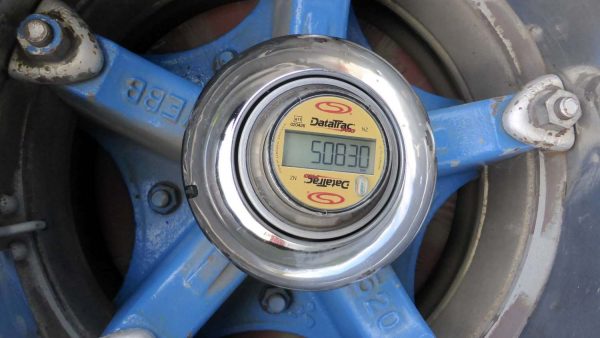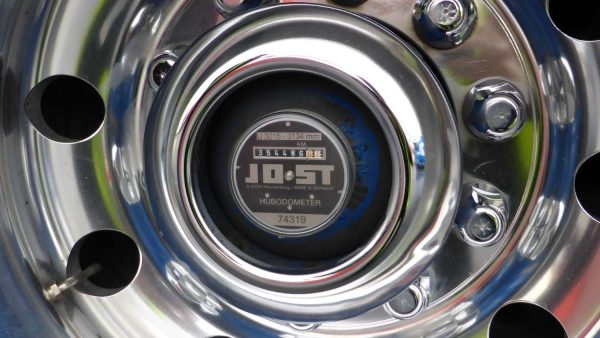A hubodometer is a device mounted on a vehicle’s axle which gives a readout of the distance it has travelled.
How are hubodometers used?
Hubodometers give a reliable recording of either miles or kilometers and are used on heavy vehicles such as lorries, buses, coaches and trailers. They are useful:
- To calculate return on investment: as the hubo is very accurate, its distance reading can be used to help calculate cost per mile on equipment that doesn’t have an odometer
- For monitoring trailers: trailers don’t have odometers therefore the only way of accurately measuring how far a trailer has travelled is by using a hubodometer
- Maintenance schedules: for vehicles like trailers that don’t have odometers, maintenance schedules can be planned around certain distances
- For calculation of levies or charges: some countries have distance-based levies for heavy vehicles due to them causing more wear and tear on roads
- For distance-based pricing: business owners can use hubodometer readings for accurately invoicing clients if they are charging on a distance basis
What are the characteristics of a hubodometer?
A hubodometer will have a readout showing the distance. They will be waterproof and must be able to operate at extremely high and low temperatures. They should be immune to tampering. The hubodometer is calibrated to the specific tyre size of the tyre on the same axle.

A digital hubodometer has more features than an analogue one, such as being able to change the unit of measurement
How does a hubodometer work?
The external part of the hubodometer rotates with the axle while the interior part of the hubo has a weight inside which keeps it pointing downwards. Every time one rotation is completed, it counts one more unit.
Hubodometer strengths and weaknesses
Mechanical hubodometers simply measure revolutions of a wheel. As the tyre wears out it gets smaller and this increases the number of times it rotates every mile leading to inaccuracies. The hubo is calibrated to average out these inaccuracies over time. Mechanical hubos can be tampered with if the person has the right tools, and they gradually wear out.

Analog hubo
Digital hubodometers offer more flexibility in tracking and converting data. They can be calibrated to account for changes in tyre diameter and can be programmed with specific information from tyre manufacturers. If they have a backlight, they are much easier to read at night. As they have fewer moving parts, they don’t wear out as quickly.
